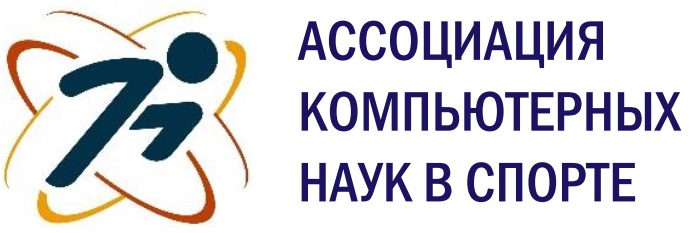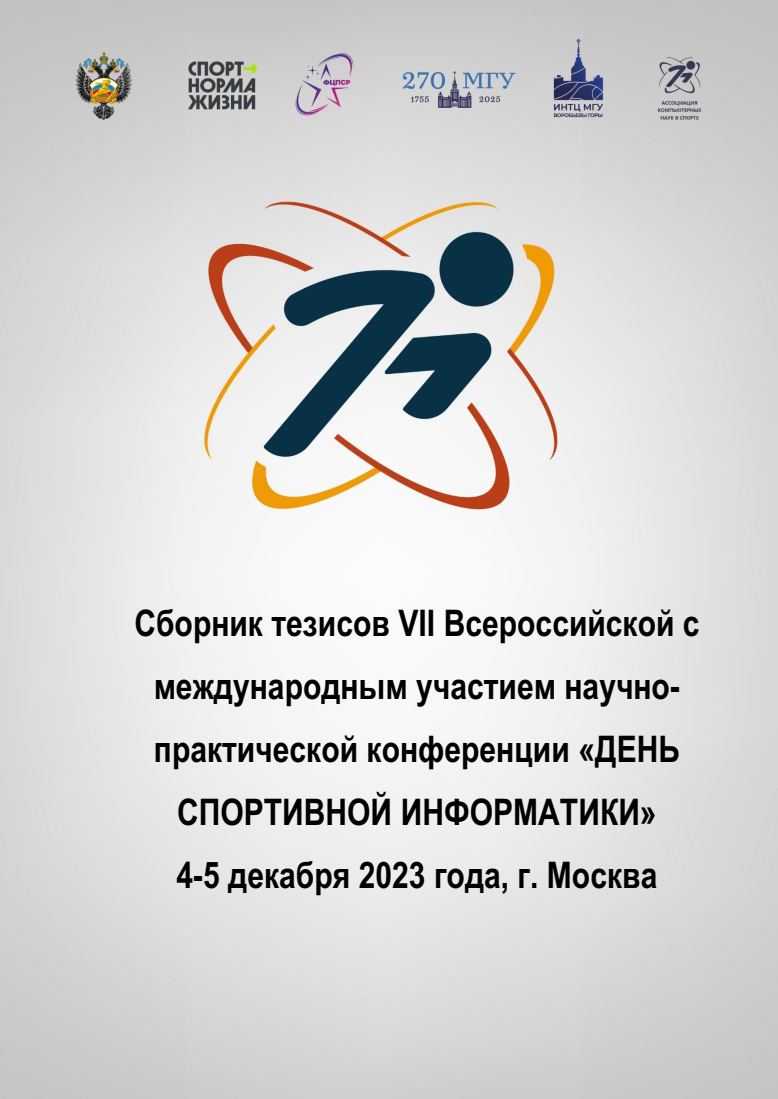from 01.01.2023 until now Saint Petersburg Electrotechnical University "Leti" (SPbGETU "LETI", kafedra LINS, Nauchno-issledovatel'skaya laboratoriya "Sistemy zahvata i modelirovaniya dvizheniya", Programmer (Biomechanical engineering))
from 01.01.2022 until now Saint-Petersburg, St. Petersburg, Russian Federation
VAK Russia 2.2.12
VAK Russia 5.8.4
VAK Russia 5.8.5
VAK Russia 5.8.6
VAK Russia 5.8.7
VAK Russia 5.2.2
VAK Russia 1.2.1
VAK Russia 1.2.2
VAK Russia 1.2.3
VAK Russia 1.5.5
VAK Russia 2.2.11
VAK Russia 2.3.1
VAK Russia 2.3.4
VAK Russia 2.3.8
UDC 796.015.686
UDC 004.932.2
UDC 004
UDC 796
UDC 796/799
CSCSTI 34.57
CSCSTI 77.05
CSCSTI 76.35
CSCSTI 76.03
CSCSTI 34.39
CSCSTI 28.23
CSCSTI 28.17
CSCSTI 28.01
CSCSTI 77.29
CSCSTI 77.31
CSCSTI 80.37
CSCSTI 20.53
CSCSTI 20.01
CSCSTI 50.33
CSCSTI 50.41
CSCSTI 30.51
Russian Classification of Professions by Education 02.04.01
Russian Classification of Professions by Education 02.06.01
Russian Classification of Professions by Education 31.08.39
Russian Classification of Professions by Education 49.02.01
Russian Classification of Professions by Education 49.06.01
Russian Classification of Professions by Education 12.02.06
Russian Library and Bibliographic Classification 75
Russian Library and Bibliographic Classification 6539
Russian Library and Bibliographic Classification 73
Russian Library and Bibliographic Classification 606
Russian Trade and Bibliographic Classification 2352
Russian Trade and Bibliographic Classification 4614
Russian Trade and Bibliographic Classification 4618
Russian Trade and Bibliographic Classification 4612
Russian Trade and Bibliographic Classification 2301
Russian Trade and Bibliographic Classification 3015
Russian Trade and Bibliographic Classification 5106
Russian Trade and Bibliographic Classification 518
Russian Trade and Bibliographic Classification 5182
Russian Trade and Bibliographic Classification 5185
Russian Trade and Bibliographic Classification 762
Russian Trade and Bibliographic Classification 7623
BISAC COM059000 Computer Engineering
BISAC COM012000 Computer Graphics
BISAC COM014000 Computer Science
BISAC COM072000 Computer Simulation
BISAC COM017000 Cybernetics
BISAC COM062000 Data Modeling & Design
BISAC COM018000 Data Processing
BISAC COM021030 Databases / Data Mining
BISAC COM071000 Digital Media / Video & Animation
BISAC COM023000 Educational Software
BISAC COM025000 Expert Systems
BISAC COM074000 Hardware / Mobile Devices
BISAC COM032000 Information Technology
BISAC COM077000 Mathematical & Statistical Software
BISAC BUS021000 Econometrics
BISAC GAM001000 Board Games
BISAC GAM016000 Fantasy Sports
BISAC GAM004050 Gambling / Sports
BISAC EDU039000 Computers & Technology
BISAC EDU036000 Organizations & Institutions
BISAC EDU037000 Research
BISAC EDU027000 Statistics
BISAC MED084000 Sports Medicine
BISAC MED078000 Public Health
BISAC MED076000 Preventive Medicine
BISAC HEA046000 Children's Health
BISAC HEA006000 Diet & Nutrition / Diets
BISAC HEA034000 Diet & Nutrition / Food Content Guides
BISAC HEA002000 Aerobics
BISAC HEA017000 Diet & Nutrition / Nutrition
BISAC HEA007000 Exercise
BISAC HEA010000 Healthy Living
BISAC HEA038000 Work-Related Health
BISAC MAT011000 Game Theory
BISAC MAT029030 Probability & Statistics / Regression Analysis
BISAC MAT025000 Recreations & Games
BISAC SPO003000 Baseball / General
BISAC SPO068000 Business Aspects
BISAC SPO077000 Children’s & Youth Sports
BISAC SPO061020 Coaching / Football
BISAC SPO061030 Coaching / Soccer
BISAC SPO011000 Cycling
BISAC SPO063000 Equipment & Supplies
BISAC SPO073000 Field Hockey
BISAC SPO015000 Football
BISAC SPO016000 Golf
BISAC SPO075000 Health & Safety
BISAC SPO024000 Juggling
BISAC SPO040000 Soccer
BISAC SPO066000 Sociology of Sports
BISAC SPO047000 Training
BISAC SPO051000 Water Sports
BISAC PSY012000 Education & Training
BISAC PSY042000 Assessment, Testing & Measurement
The aim of the study was to find the difference in the lengths of the muscular spindle and tendon when performing a semi-squat and a deep squat. The study involved 5 men who are professionally engaged in powerlifting. Graphs of the dependence of the length of the "muscle-tendon" system are constructed from the time of performing exercises for the rectus femoris muscle for all participants. It was revealed that four participants had an increase in the length of the rectus femoris muscle on both legs with a deep squat, compared with a semi–squat, and one had a decrease. An asymmetry in the indicators between the left and right legs was revealed in a participant who previously had a patellar injury.
biomechanics, sports, video analysis, OpenSim, Qualisys, semi-squat, deep squat
1. Bloomquist K., Langberg H., Karlsen S., Madsgaard S., Boesen M., Raastad T. Effect of range of motion in heavy load squatting on muscle and tendon adaptations. Eur. J. Appl. Physiol., 2013, Vol. 113, No 8, pp. 2133-2142. DOI:https://doi.org/10.1007/s00421-013-2642-7.
2. Huxley A.F. Muscle structure and theories of contraction. Prog. Biophys. Biophys. Chem., 1957, Vol. 7, pp. 255-318.
3. Seth A., Hicks J.L., Uchida T.K., Habib A., Dembia C.L. et al. OpenSim: Simulating musculoskeletal dynamics and neuromuscular control to study human and animal movement. PLoS Comput. Biol., 2018, 14(7):e1006223. DOI:https://doi.org/10.1371/journal.pcbi.1006223
4. Chen L., Jiang Z., Yang Ch., Cheng R., Zheng S., Qian J. Effect of different landing actions on knee joint biomechanics of female college athletes: Based on opensim simulation. Front. Bioeng. Biotechnol., 2022, 10:899799. DOI:https://doi.org/10.3389/fbioe.2022.899799









